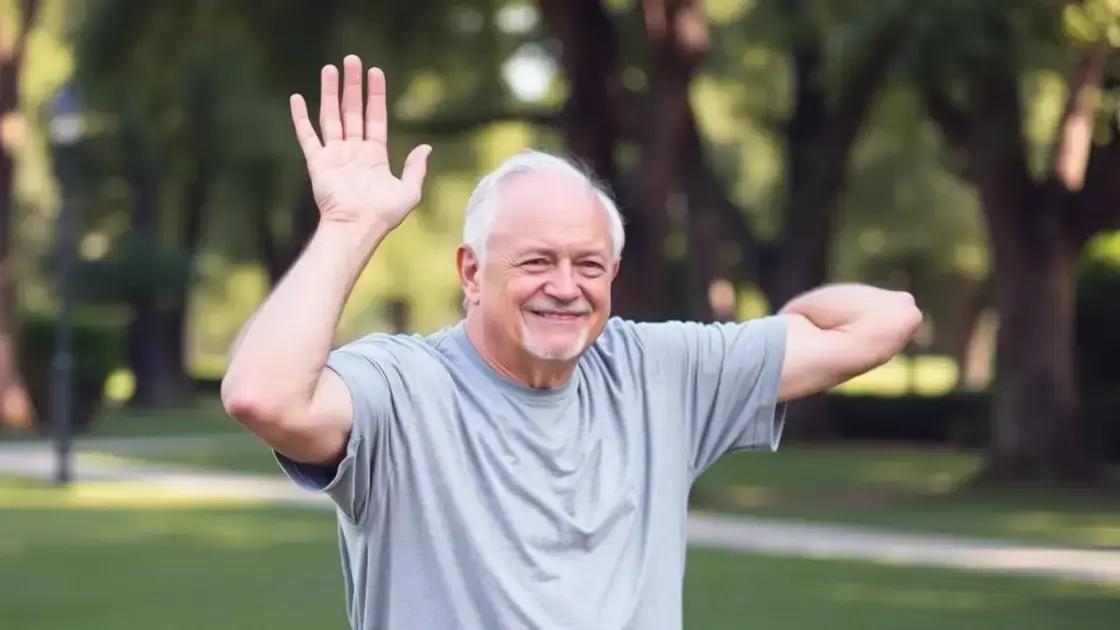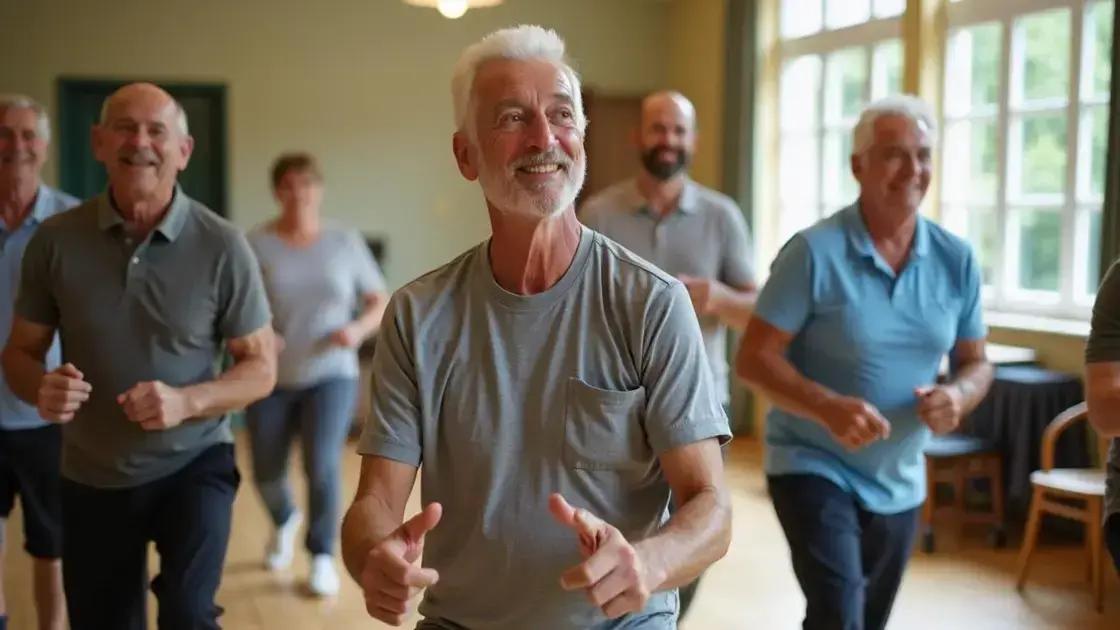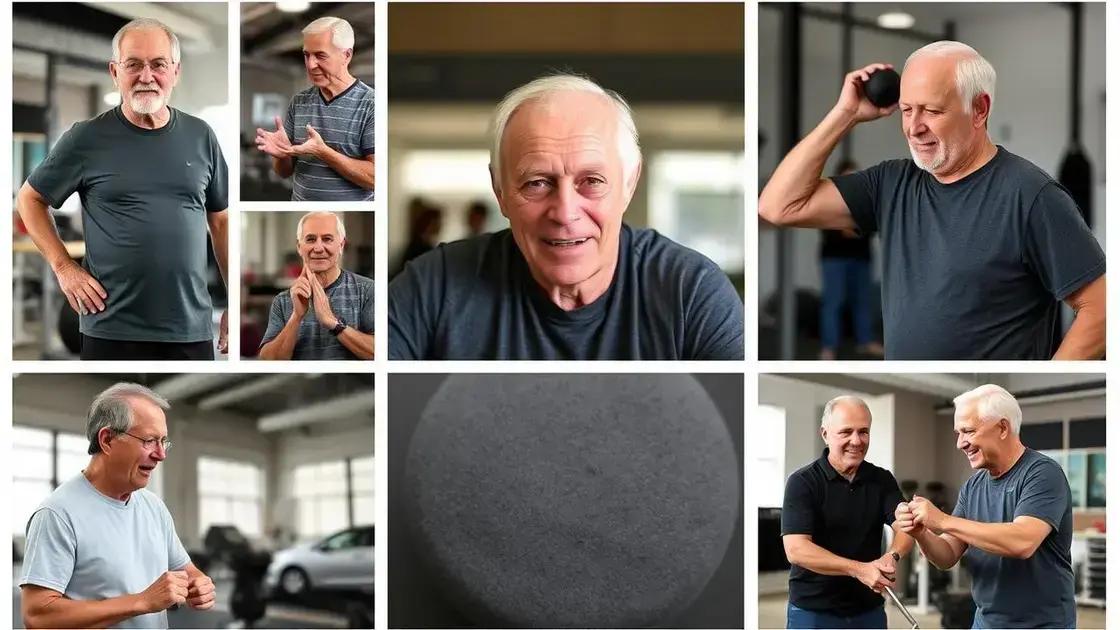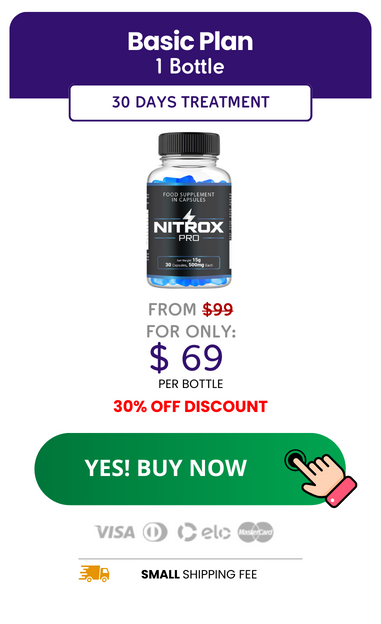The rise of active recovery programs tailored to men over 50 focuses on low-intensity exercises that enhance recovery, improve flexibility, and promote overall health. Participants experience significant benefits including reduced injury risk, better cardiovascular health, and enhanced mental well-being through personalized and supportive programs.
The rise of active recovery programs tailored to men over 50 is reshaping wellness for seasoned individuals. These innovative programs are specifically designed to promote healing, improve physical well-being, and enhance the quality of life. With a focus on gentle, effective methods, men can regain strength and vitality through tailored activities. This article explores the various aspects of active recovery, emphasizing its significance for older men.
Understanding Active Recovery

Active recovery refers to low-intensity exercises aimed at helping the body recover from strenuous activities. Unlike complete rest, active recovery promotes circulation, reducing muscle soreness and stiffness. This is especially important for men over 50, as their bodies require different recovery methods compared to younger individuals.
The Science Behind Active Recovery
Research shows that engaging in light physical activity, such as walking, swimming, or cycling, can enhance recovery by increasing blood flow to muscles. This aids in delivering essential nutrients and oxygen, helping the muscles heal effectively.
Types of Active Recovery Activities
For men over 50, suitable active recovery activities include yoga, stretching exercises, and leisurely sports. These activities not only boost physical recovery but also contribute to mental well-being by reducing stress and increasing flexibility.
Incorporating Active Recovery into Your Routine
To reap the benefits, men over 50 should integrate active recovery sessions into their weekly fitness routine. Aim for at least one day of active recovery after a high-intensity workout. Listen to your body, and adjust the intensity based on your condition and needs.
Benefits for Men Over 50

Active recovery programs offer numerous benefits for men over 50, contributing to overall health and wellness. First, these programs can improve flexibility, helping to maintain mobility as men age. Regular light exercises can enhance joint range of motion and reduce stiffness.
Enhancing Recovery and Reducing Injury
By actively engaging in recovery, men reduce the risk of injuries that can occur from sudden high-intensity workouts. Active recovery promotes faster healing and helps the body adapt more effectively to physical stress, resulting in safer training sessions.
Improving Cardiovascular Health
Light aerobic activities like walking or cycling benefit cardiovascular health, which is particularly important for men over 50. These activities can help maintain healthy blood pressure and cholesterol levels, reducing the risk of heart disease.
Boosting Mental Health
Participating in active recovery can also improve mental health. Physical activity releases endorphins, enhancing mood and reducing stress levels. Men over 50 often experience life changes, so maintaining mental clarity is vital.
Supporting Social Connections
Engaging in group activities or classes can foster social connections, which are essential for emotional well-being. Active recovery provides opportunities to meet others with similar interests, creating a supportive community.
Tailoring Programs to Individual Needs

Each man over 50 is unique, with different health conditions, fitness levels, and recovery needs. Tailoring programs to individual needs is essential for maximizing the benefits of active recovery. This personalization allows for safer participation and more effective outcomes.
Assessing Individual Factors
Before starting an active recovery program, a proper assessment should be conducted. This might include evaluating medical history, current physical abilities, and personal fitness goals. Understanding these factors helps design a program that addresses specific requirements.
Creating Customized Activity Plans
Once assessment is complete, customized activity plans can be created. These plans should include a mix of flexibility exercises, low-impact cardio, and strength training tailored to the participant’s capacity. Adjustments should be made based on progress and feedback.
Monitoring and Adjustments
It is crucial to monitor participants’ responses to their recovery activities regularly. Gather feedback regarding how they feel during and after exercises. Adjust the program as needed to ensure it stays challenging yet achievable.
Incorporating Professional Guidance
Engaging fitness professionals or physical therapists can enhance individual recovery programs. These experts provide valuable insights, ensuring that exercises are performed correctly and effectively, reducing the risk of injury.
Success Stories and Testimonials

In the realm of active recovery programs tailored to men over 50, success stories and testimonials can inspire and motivate others. Hearing real-life accounts highlights the positive outcomes and effectiveness of these programs.
John’s Journey
At 55, John faced severe knee pain, limiting his ability to enjoy activities he loved. After joining an active recovery program, he learned tailored exercises to strengthen his legs without aggravating his condition. Today, he hikes regularly and feels more energetic than ever.
Michael’s Transformation
Michael, 60, struggled with high blood pressure and needed a healthier lifestyle. Through a community-based active recovery program, he engaged in light aerobic exercises and strength training. He lost weight, improved his health markers, and gained newfound self-confidence.
Tom’s Testimonial
“I never thought I could feel this good at my age. The active recovery program taught me how to stay fit while listening to my body. I feel stronger and have more energy to spend time with my grandchildren.”
Feedback from Participants
Many participants echo similar sentiments. They report improved flexibility, reduced pain, and a sense of camaraderie from engaging with peers. Success stories show that it’s never too late to start an active recovery journey.
Embracing Active Recovery for a Healthier Future
Active recovery programs tailored to men over 50 present a unique opportunity to enhance overall health and well-being. These programs promote physical fitness through low-intensity activities that facilitate healing and reduce the risk of injury.
By understanding active recovery, recognizing its benefits, and tailoring programs to individual needs, older men can experience significant improvements in flexibility, cardiovascular health, and mental wellness. Success stories and testimonials from participants further illustrate the positive impact of these programs on quality of life.
Ultimately, embracing active recovery is a proactive step towards a healthier, more vibrant future. Every man over 50 has the potential to thrive and lead an active lifestyle with the right support and resources.
FAQ – Frequently Asked Questions about Active Recovery Programs for Men Over 50
What is active recovery?
Active recovery involves low-intensity exercises that help the body recover from strenuous activities, promoting circulation and reducing soreness.
What are the benefits of active recovery for men over 50?
Benefits include improved flexibility, reduced risk of injury, enhanced cardiovascular health, and better mental well-being.
How can I tailor an active recovery program to my needs?
Start with a proper assessment of your health, fitness level, and personal goals. Work with a professional to create a custom plan.
What types of activities are included in active recovery programs?
Common activities include walking, yoga, swimming, light cycling, and stretching exercises that focus on flexibility and stability.
Are there success stories from men who have participated in these programs?
Yes, many participants have shared positive transformations, experiencing improved fitness levels, mobility, and a better quality of life.
How often should I engage in active recovery?
It is recommended to incorporate active recovery into your routine at least once a week, particularly after high-intensity workouts.













